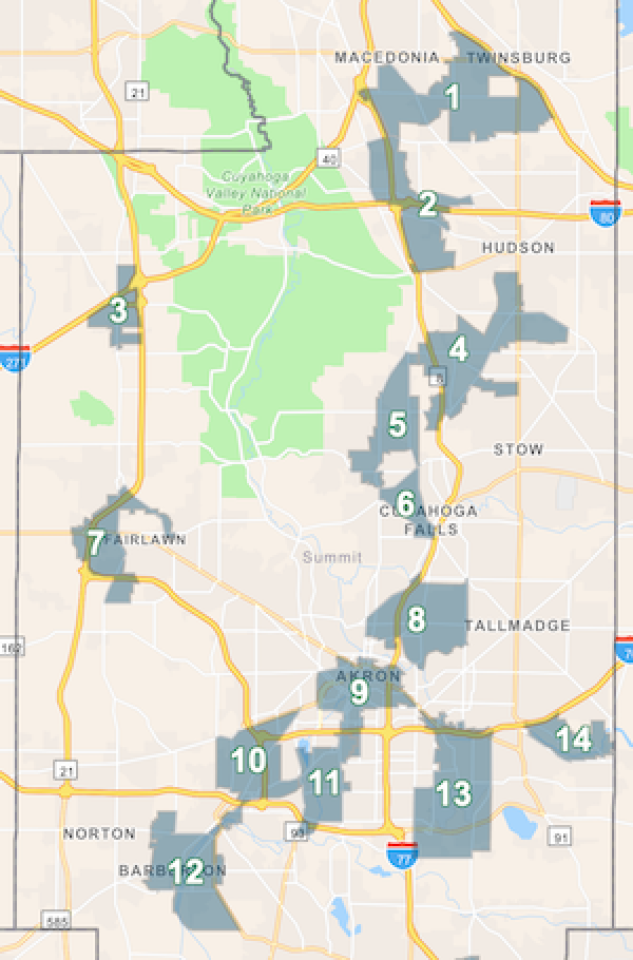
Fast, affordable Internet access for all.

Summit County has put together a multi-part, $75 million broadband plan to improve connectivity in the area: a middle-mile institutional fiber ring to connect the county’s public safety facilities and expand its broadband capacity, a new datacenter, and a fiber investment to specifically target residents and businesses in the county’s underserved areas and economic activity hubs. When completed, the whole project will go down as one of the county’s largest capital projects to date.
Summit will dedicate $35 million of the $105 million it received from the American Rescue Plan (ARPA) for the fiber ring, another $20 million in ARPA dollars to serve job hubs and areas of need, and $20 million of its own county funding for the datacenter. But the locally driven solution almost didn’t materialize, with recent movement in the state legislature threatening community-owned solutions that remain out of step with both residents and local officials.
Defending Community Broadband Against State Challenges
The county’s potential for better connectivity was threatened last year, when the state of Ohio introduced some last-minute legislation that threatened to outlaw public broadband. In June of 2021, an amendment banning municipally-owned broadband was anonymously tacked onto the State Senate budget bill. The amendment barred the creation of new municipal networks and the ongoing operation of existing municipal networks in areas where a private provider offered service. It prevented city governments from accepting federal money for broadband projects, and allowed city-owned networks to provide service only in areas where no private provider was present (less than two percent of Ohio).
Up until this amendment was proposed, Summit County Executive Ilene Shapiro had been advocating for countywide expansion of FairlawnGig, a veteran network based in the city of Fairlawn. The network had been connecting residents for a number of years, and had been working with a number of other local governments to provide support and answer questions. Motivated to improve public safety and education, draw businesses to the county, and lower Internet service prices for residents, Shapiro was one of the most prominent of those who opposed the amendment. William Roth, the mayor of Fairlawn, was also critical, pointing out that the amendment would force communities to rely almost entirely on private providers to offer quality connectivity to their residents. Roth had struggled to obtain private broadband investment in his own community despite the need for it (in 2014, Ohio was listed 48th out of 50 states for average Internet speed). When speaking about his experience reaching out to private providers to try to improve connectivity in Fairlawn, Roth said: "We were met with flat out just silence, refusals and one executive actually laughed in my face and said ‘good luck.'"
The Township Association of Summit County released a resolution against the amendment, citing the following benefits of a publicly-owned network: “communication between public safety forces, ability to attract and retain business employment opportunities, and access to high-quality medical services from anywhere.” The amendment received major pushback from the public as well, and was eventually dropped from the state budget.
Moving Past the Ban, and onto the Plan
With state-level opposition out of the way, Summit County has been able to resume its plan to meet the area’s connectivity needs. In October of 2021, the county hired Environmental Design Group (EDG), a technical fiber network expert from the area, to provide consulting services for the buildout to underserved areas and economic hotspots. EDG is “survey[ing] fiber routes, market demand, private partners, [and] engineering and construction concerns.” Funding for these services comes from a $125,000 CARES Act grant and $165,000 match from the county. In November, Summit County contracted MCM Consulting Group as the Criteria Engineer.

In March, EDG distributed a feasibility survey requested by county officials to help gauge the “existing needs, challenges, pricing and user experiences of internet customers.” The survey, which will support a feasibility study, was sent to residents in 16 zones through the county, with a special focus on “heightened areas of employment or "job hubs" and under-served regions or "opportunity zones."” Benefits of the network include “enhanced public education, health and criminal justice.” The buildout will likely begin in Akron this year and be completed by 2024.
The 125-mile underground fiber ring is designed to bring broadband to public safety facilities in all of Summit’s 31 communities, and will support an emergency radio system, consolidated dispatch center, and virtual court platforms. The network will connect each of the county’s city, village and township halls, allowing communities to decide individually if there is sufficient demand to build fiber out to each premises in the community. Summit County Chief of Staff Brian Nelsen said of the project: “The plan is to communicate with these communities in Summit County about their broadband needs in regard to businesses and any other areas they’d like to see expansion occur.” The county anticipates that the fiber ring will attract private providers interested in investing in last-mile infrastructure to bring service to residents and businesses, and plans to arrange public-private partnerships between the county and a number of private providers. Summit expects private investment to contribute as much as $300 million to expand access across the county.
The fiber ring is a partnership between Summit County and the cities of Fairlawn and Hudson. To manage and operate the ring, the county will bring in FairlawnGig, Fairlawn’s municipal broadband utility. The network has been great for the city’s own economic development – since its creation, FairlawnGig has attracted businesses to the area and has had a beneficial impact in a host of economic and other ways since inception in 2017. The city of Fairlawn will also host Summit county’s new data center, which will support the county network.
